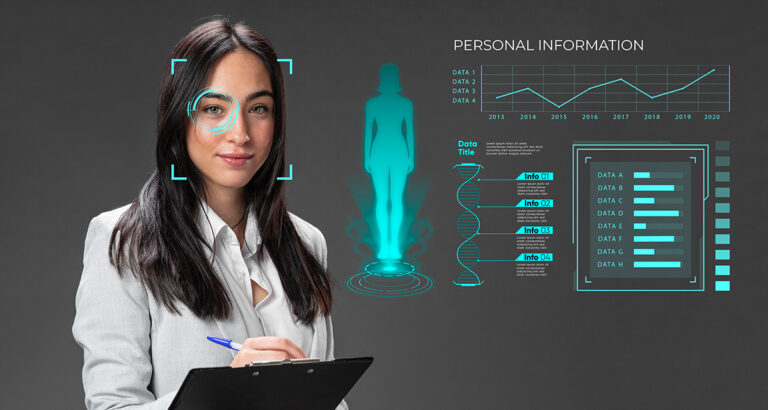The human nervous system, with its approximately 86 billion neurons and an even greater number of glial cells, represents one of the most complex and fragile networks in biology. It is the seat of consciousness, emotion, cognition, movement, and perception. When this network is disrupted — whether by trauma, genetic mutation, neurodegenerative disease, or cerebrovascular accident — the consequences are often profound and irreversible. For decades, clinicians and researchers have searched for effective ways to not only treat the symptoms of neurological disorders but to restore the underlying structure and function of the nervous system. While pharmacological agents and surgical interventions have provided some degree of control and symptom management, they often fall short of reversing the underlying pathophysiology. True neural regeneration has remained elusive.
In recent years, however, an exciting confluence of disciplines — nanotechnology, synthetic biology, bioinformatics, and neuroengineering — has opened new frontiers in therapeutic possibilities. Among the most ambitious of these developments is the concept of injectable nanocomputers: tiny programmable devices, small enough to navigate the extracellular matrix and interface with individual cells, yet smart enough to detect pathology, process data, and deliver therapeutic interventions in real time. Unlike conventional drug therapies, which often act systemically and non-selectively, nanocomputers offer the potential for precise, adaptive, and localized responses. This could mean targeting only those neurons showing early signs of stress, releasing neurotransmitters in response to detected deficits, or modulating inflammation in tightly defined areas of the brain or spinal cord.
Although still in its early stages, this emerging technology is already being investigated for a wide range of neurological applications — from Alzheimer’s and Parkinson’s disease to traumatic brain injury, stroke rehabilitation, and even psychiatric conditions like depression and schizophrenia. It is not only the engineering feats that make this vision compelling but the paradigm shift it represents. For the first time, we are moving toward therapeutic systems that can act autonomously within the human body, communicating with cells and responding to molecular cues like intelligent agents.
However, as physicians well know, advanced medical technology, no matter how promising, cannot operate in isolation. The health of the nervous system is shaped by a lifetime of variables — nutrition, physical activity, mental health, environmental exposures, social engagement, and systemic diseases like diabetes or hypertension. These lifestyle and systemic factors are not secondary but foundational. Any effective therapeutic strategy, particularly one as sophisticated as nanocomputing, must be integrated into a broader framework that includes public health, preventive care, and patient education. No nanomachine can undo the effects of chronic stress, sedentary behavior, poor sleep, or dietary deficiencies if these remain unaddressed.
The Nature and Function of Injectable Nanocomputers

Nanocomputers refer to nanoscale devices capable of performing computational tasks. When designed for biological systems, particularly for neural applications, they are typically no larger than a few dozen nanometers and built from biocompatible materials such as DNA scaffolds, carbon nanotubes, or lipid-based systems. Some designs also integrate synthetic proteins, quantum dots, or metal-organic frameworks to enhance functionality.
Unlike passive nanoparticles that merely deliver drugs, these devices can carry logic gates, sensors, and actuators. This allows them to process biochemical signals such as changes in ion concentrations, neurotransmitter levels, or inflammatory markers and respond by triggering therapeutic actions like releasing drugs, altering local electric potentials, or sending signals to external devices. The concept shifts therapy from a one-size-fits-all dosage model to a feedback-responsive, context-sensitive mechanism.
Crossing the Blood-Brain Barrier
One of the most persistent challenges in neurotherapeutics is the blood-brain barrier. This highly selective barrier protects the brain from pathogens and toxins but also impedes many drugs and therapeutic agents. Injectable nanocomputers offer a potential advantage through tailored surface chemistry and size control that allow them to cross this barrier either passively or via receptor-mediated transport.
Additionally, direct injections into the cerebrospinal fluid or into damaged neural tissue could bypass this barrier altogether. These approaches raise concerns about invasiveness and safety, but advancements in imaging, precision delivery, and catheter-guided injections are reducing associated risks. Once inside the neural environment, nanocomputers can act with precision unattainable by traditional pharmacological methods.
Applications in Neurodegenerative Disease
Conditions like Alzheimer’s disease, Parkinson’s disease, Huntington’s disease, and amyotrophic lateral sclerosis have proven difficult to halt or reverse. Existing medications mostly provide symptomatic relief. Injectable nanocomputers may offer a more fundamental intervention. By detecting misfolded proteins, altered neural pH, or inflammation markers, they could intervene at early stages, well before clinical symptoms become irreversible.
In Alzheimer’s disease, for instance, nanocomputers could identify and bind to beta-amyloid plaques, then release enzymes to degrade them. They could also modulate local inflammatory responses by detecting cytokine levels and delivering anti-inflammatory molecules. For Parkinson’s disease, they could respond to dopamine deficiencies by stimulating specific circuits or releasing dopamine precursors directly in affected brain regions, reducing systemic side effects and improving functional outcomes.

Repairing Traumatic Injuries and Stroke Damage
Traumatic brain injury and spinal cord injury often result in permanent deficits due to neuronal death, glial scarring, and disrupted axonal pathways. Conventional therapies focus on damage control, rehabilitation, and, in some cases, neural prosthetics. Nanocomputers offer the prospect of active repair. They can sense local environments characterized by hypoxia, excitotoxicity, and inflammation, then respond in ways that preserve surviving neurons and promote regeneration.
For example, in the acute phase of spinal cord injury, nanocomputers might suppress the overproduction of glutamate, which causes excitotoxicity. They could also release neurotrophic factors to stimulate axonal growth and enhance myelination by targeting oligodendrocyte progenitors. Similarly, after an ischemic stroke, nanocomputers could aid in clot dissolution at the microvascular level, support angiogenesis, and modulate astrocyte activity to reduce scarring and improve functional recovery.
Targeting Mental Health Disorders
Mental health remains a challenging field, in part because of the complexity and individual variability of neurochemical imbalances. Systemic drugs, such as SSRIs and antipsychotics, often have delayed onset, incomplete efficacy, and undesirable side effects. Nanocomputers could represent a new class of psychiatric tools capable of localized and temporally precise interventions.
By detecting neurotransmitter levels in specific regions of the brain, such as the prefrontal cortex or the amygdala, nanocomputers could dynamically adjust local serotonin or dopamine levels without affecting the entire brain. For instance, in major depressive disorder, they might modulate synaptic serotonin reuptake only when levels drop below a certain threshold, reducing the risks associated with chronic receptor desensitization.
In conditions like bipolar disorder or anxiety disorders, they could help regulate neural oscillations or modulate neuropeptide release in response to physiological cues, such as cortisol surges or circadian misalignments. While the ethical and clinical oversight of such systems must be rigorous, the opportunity to tailor mental health interventions at the molecular level is profound.
Precision and Personalization
Nanocomputers operate not with the blunt force of generalized pharmacology but with precision akin to a molecular scalpel. Their programmability means they can be tailored not just to specific diseases but to specific patients. With the advent of genomic medicine and personalized diagnostics, a nanocomputer could be designed to respond to unique biomarker profiles, genetic polymorphisms, or even epigenetic modifications.
Furthermore, their ability to store and transmit data means they could integrate into broader digital health ecosystems. They might signal to wearable devices, alert physicians to early signs of relapse, or trigger external modulation systems such as transcranial stimulation. This interconnectivity aligns with the larger trajectory of personalized, continuous, and predictive medicine.
Training and Healthcare Integration
The clinical integration of nanocomputers will require new skills, workflows, and ethical guidelines. Physicians will need to understand nanoscale device behavior, molecular signaling pathways, and computational algorithms. Interdisciplinary collaboration will become the norm, with teams composed of neurologists, bioengineers, nanotechnologists, ethicists, and data scientists.
Hospitals and clinics may need new infrastructure to monitor implanted devices, interpret their output, and respond to their real-time feedback. Regulatory agencies will also need new frameworks for assessing these hybrid devices that blur the line between drug and machine. Current models for evaluating safety, efficacy, and post-market surveillance must evolve to accommodate adaptive and intelligent therapeutic platforms.
Medical education will need to prepare future doctors for this shift. Curriculum updates might include modules on nanomedicine, synthetic biology, and neural interface technology. Just as genomics transformed oncology and infectious disease management, nanocomputers may revolutionize neurology, psychiatry, and rehabilitation.
Safety, Ethics, and Governance
Injectable nanocomputers interact with the most sensitive organ in the human body. Safety must be addressed not just in terms of biocompatibility but also in terms of computational behavior. Devices must be designed to degrade safely, avoid immune detection, and cease operation if malfunctioning. Fail-safes, such as external deactivation triggers or programmed lifespan limitations, are essential.
Ethical issues also extend to autonomy, privacy, and consent. If a nanocomputer collects or acts on neural data, who owns that data? How do we ensure that interventions remain within intended parameters? Could such devices be exploited for purposes beyond therapy? Transparent oversight, patient-centered consent processes, and robust data protections will be essential.
Furthermore, equity in access must be addressed early. The cost of developing and deploying nanocomputers may initially be high, but systems must be in place to ensure global accessibility. Neurological disease affects patients across all demographics, and technology should not widen healthcare disparities.
The Role of Lifestyle in Neural Health
Despite the enormous promise of injectable nanocomputers, physicians must remember that good neurological health is not built solely on technology or medication. Lifestyle factors such as diet, physical activity, sleep, social connection, and stress management profoundly affect brain function. Chronic inflammation, vascular risk factors, and metabolic syndromes are known to contribute to neurodegeneration and cognitive decline.
No nanodevice can replace the neuroprotective effects of regular exercise, a balanced diet rich in antioxidants and omega-3 fatty acids, or consistent sleep hygiene. Gut microbiome health, meditation, and psychosocial well-being also play significant roles in maintaining neural integrity and plasticity. These foundations must be in place to maximize the benefit of any advanced intervention, including nanocomputers.
A comprehensive approach to neurological care must combine cutting-edge science with established wisdom about human behavior and environment. Doctors must lead in creating integrative care models that combine technological innovation with public health strategies and lifestyle medicine.
Looking Ahead
Injectable nanocomputers are still in their formative stages, but their conceptual power and early prototypes suggest a future where neurological disorders can be treated with unprecedented precision. These devices may one day become standard tools in managing not only disease but in preserving cognitive function, enhancing rehabilitation, and even extending healthy lifespan.
Their development and deployment will require thoughtful planning, interdisciplinary research, and open ethical dialogue. Physicians, as stewards of health and advocates for patient well-being, have a critical role to play in shaping this future. By staying informed, contributing to regulatory frameworks, and integrating technology with compassionate care, doctors can ensure that these innovations serve the best interests of humanity.
As medicine moves into this next frontier, the most successful strategies will not rely solely on what we can inject or implant, but on how we integrate technology into a broader vision of health that includes lifestyle, education, community, and equity. Injectable nanocomputers are not a panacea, but in skilled hands and under ethical guidance, they could become one of the most powerful tools ever created for neurological repair.





